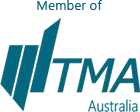As calls to return to office increase and grow louder, the world seems to veer towards a hybrid method of working, where what used to be a purely remote workforce due to the pandemic, turns into a hybrid model – where employees are taking turns between working from home and in the office.
In this new normal, the “half-and-half” remote nature of workforce interaction necessitates certain systems to ensure workforce productivity, efficiency, and quality of work. Here are some ways we can maximize the most out of your workforce, regardless of their work location or proximity to the office
1. Get a time-tracking software.
If you have employees or subcontractors that are working remotely, you can consider getting a time-in and out platform to ensure regular attendance of your workforce. Most popular options include Deputy, Clockify, and QuickBooks Time.
By using a time-tracking solution, you can take advantage of the following features:
- Geo-tracking or geofencing enables your team to track employee locations to ensure they are in the correct work sites during business hours.
- Automated invoicing can be done for employees or subcontractors that are rendering hourly work.
- Integration with popular accounting systems like Xero and MYOB can be done, reducing time spent on doing financial administration work.
Watch out for micro-managing, or at least sending the message that employees are closely monitored for hours rendered. We should place more emphasis on quality of work output, instead.
2. Get a Customer Relationship Management (CRM) solution for your on-the-go sales teams
For sales teams doing mobile work, it is critical to use a CRM platform to ensure timely update to the sales pipeline without having to go through regular meetings and administrative work. CRM options like Salesforce, Microsoft Dynamics 365, and HubSpot enable sales teams to log all sales-related activities on the go, through an iOS or Android-based mobile app. Extensive customizations can also be done to a CRM solution to fit the sales lifecycle and lead qualification process of your business.
Other benefits also include:
- Having the capability to project future sales through forecasting
- Monitoring KPIs of sales teams
- Getting sales insights and trends, which can be used for smarter decision-making
- Integrating with other software solutions to automate back-and-forth syncing of data, e.g., synchronizing calendar with MS Outlook, data storage with Google Drive, accounting processes with Xero / MYOB, etc.
Watch out for CRM configuration that is not custom fit to your organization’s sales process. This may cause a disconnect in analyzing sales pipeline and lead qualification. To prevent this, it is best to hire a business or operations consultant who is an expert in CRM implementation.
3. Automate and optimize collaboration
At this point, there are so many tools, both free and paid, that can be used for remote collaboration and increased productivity. Some of the more popular ones are listed below:
- For file storage and cloud productivity, it is best to use Microsoft Office 365 or Google Suite for their app listings and cloud storage.
- For virtual calls and collaboration, primary candidates are MS Teams, Slack, or Zoom.
Your business’s choice boils down to perceived ease of use and value given to your firm. It is best to seek advice from solution experts to maximize whichever platform you choose.
Watch out for integration between these tools. For the best results, seek experts in business process automation to ensure seamless connection between all platforms to be used.
4. Communicate, communicate, communicate
Of all available technology and methods, the tried-and-tested way of just reaching out and checking in to your employees is still the best way to motivate them to do better. Prioritize communication amongst your team members to ensure a strong team mentality; this will be handy in high-pressure situations that your team will tackle in the future.
Other methods to communicate with your team include:
- Holding regular 1-on-1 calls with your team members. Topics to be discussed can be work-related, e.g., performance assessment, work and career goals, or non-work items like hobbies, interests, life status, etc.
- Having regular employee-engagement activities that focus on team rapport. This can be as simple as holding virtual game nights, or as robust as preparing company trips for team building.
- Proactively seek out and discuss training and career advancement opportunities with your employees. This can be in the form of a process system that qualifies employees for training certification or promotion upon reaching a certain performance threshold, or just aligning a career path with employees so they are motivated to strive harder.
Watch out forcomplacency. Every business should ensure healthy lines of communication and feedback system with its employees to address work-related issues.






